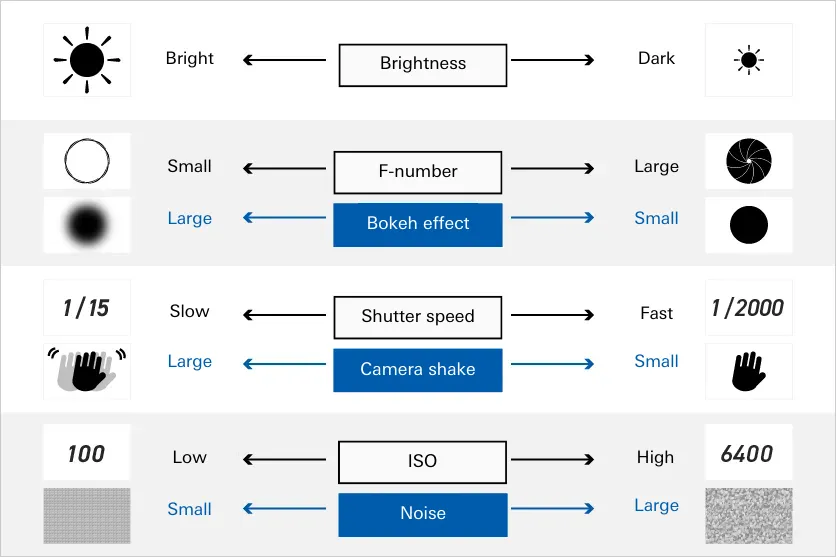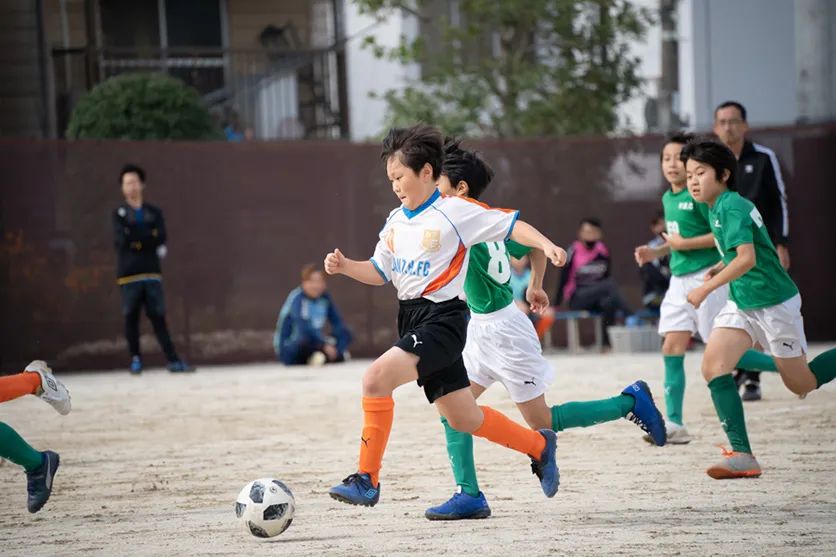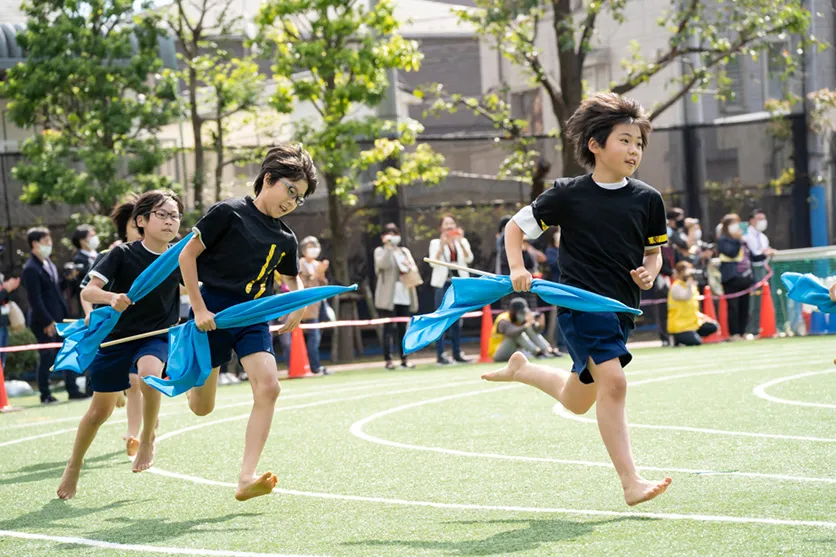August 30, 2024
How to take good photos of children with an interchangeable lens camera Introducing the key points to help you improve
How to take good photos of children with an interchangeable lens camera Introducing the key points to help you improve
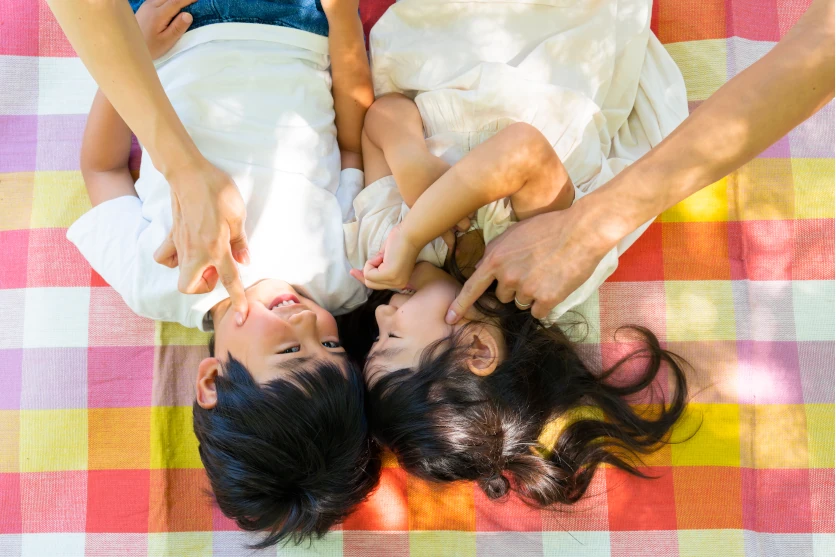

Perhaps you want to make use of an interchangeable lens camera to take nice photos of your children, but are unsure of what to do or what specific shooting methods to use? To take nice photos of children using an interchangeable lens camera, there are certain points you need to work out, like how to adjust exposure and bokeh. In this article, we introduce tips on how to take good photos of children using an interchangeable lens camera, and also provide a guide for making lens choices.
Key points to taking great photos of children
It’s important to consider several key points to take good photos of children with an interchangeable lens camera. Let’s dig into the secrets to taking photos from various perspectives, from camera settings to different types of lenses.
1. Adjusting exposure
To take photos well, you first need to adjust exposure and bokeh. Nailing the right exposure is important for fully capturing a child’s expression. Here we will explain about the three elements that determine exposure: (1) f-stop, (2) shutter speed, and (3) ISO sensitivity.
(1) F-stop (aperture)
F-stop, or aperture value, is a numerical value indicating the size of the aperture of a lens, and can indicate how much the aperture has been narrowed (“stopped down”) from its maximum (“wide open”) aperture. The larger the aperture (and lower the f-stop), the more light the lens can gather, and the stronger the bokeh effects in the background of images. “Maximum aperture” or “wide-open aperture” indicates the largest possible aperture of a lens, and represents the smallest f-stop value the lens is able to achieve. As the maximum aperture varies by lens, when you want stronger bokeh in your photos, we recommend a lens with a large maximum aperture (small f-stop value).
As a specific example of how to set the f-stop, to accentuate cuteness in a photo with a child as the main subject, and f-stop close to the wide-open aperture of the lens, such as F2.8, will produce soft bokeh and present a sense of warmth. In addition, when shooting in conditions with minimal light, such as indoors or under shade, you can increase the amount of light the lens takes in by reducing the f-stop value.
However, if you want to capture a child in a dynamic setting that includes the background, you should set a slightly higher f-stop (stop down the aperture). Similarly, when a child is moving around, setting a higher f-stop value will make it easier to keep them in focus.
(2) Shutter speed
Shutter speed is a value indicating the time during which the shutter is open. The shutter speed is expressed as fractions of a second such as 1/100 sec. or 1/1000 sec. The larger the numerator, the faster the shutter speed.
Children will often refuse to remain still, so increasing the shutter speed to some degree can help you reliably capture each moment. However, while a higher shutter speed makes it easier to stop motion blur in the subject or camera shake, it may result in darker photos due to an insufficient amount of light.
Although it depends on the focal length, generally speaking a shutter speed higher than 1/100 to 1/200 is enough to prevent blurring. Use this as a starting point, and increase the shutter speed if blurring still occurs. If you are taking a still subject such as newborn baby or the face of a sleeping child, often a shutter speed of 1/50 sec. or lower will be sufficient.
(3) ISO sensitivity
With a digital interchangeable lens camera, light that enters through the lens is converted into electrical signals by the image sensor to create a photograph. ISO sensitivity determines to what degree these electrical signals are amplified.
The higher the ISO sensitivity, the brighter the exposure you can ensure even in dark environments, but along with this noise (roughness) also increases, degrading image quality. For this reason, if you can shoot in as bright an environment as possible and lower the ISO sensitivity, you can more easily take images with high image quality.
However, when you are photographing children that are moving around in an environment without much light, such as indoors or cloudy weather, there are cases where you will have to set a low f-stop and fast shutter speed. In those situations, raise the ISO sensitivity to ensure proper exposure.
Exposure modes
Camera bodies offer modes determining how the exposure is set, including program auto, aperture priority mode, shutter priority mode, and manual mode. Of these modes, we recommend making use of aperture priority mode or shutter priority mode to ensure your photos turn out the way you intend.
With aperture priority mode, you set the desired f-stop, and the camera automatically adjusts the shutter speeds to ensure proper exposure. This is a handy setting for when you want to determine the amount of bokeh when shooting.
With shutter priority mode, you set the desired shutter speed and the camera automatically adjusts the f-stop to ensure proper exposure. That’s why this mode is handy when you want to capture a moment from a moving subject.
For example, when you want to take a portrait of a child that is still, you should try aperture priority mode, and set shutter priority mode when you want to take photos of children moving around such as on playground swings, or while playing sports. Once you get the hang of these modes, you can try out manual mode and experiment with various other settings.
2. Getting creative with the eye level (position, angle)
When photographing babies and infants, in general try to keep your posture low (maintain a low position) and shoot at the same eye level as the child as much as possible. If you shoot while standing (from a high position), it will tend to be harder to capture the expressions of the child, and can make photos look small in scale. By aligning the position of the camera to the eye level of the child, you can properly capture their expressions and take more lively photos.
Conversely, when shooting from a high position it is possible to create a sense of depth by getting creative with the composition while including elements such as roads, toys or fallen leaves in the background. Try shooting from a variety of positions to look for expressions you like.
3. Utilize Eye AF (autofocus)
Depending on the model of interchangeable lens camera you have, it may be equipped with an Eye AF function. Eye AF is a feature that automatically detects the eyes of a subject and focuses on them. Using this feature, even in cases where a child is moving around a little or when it is hard to achieve focus when using a low f-stop on a large aperture lens, you can take pictures without blurred facial expressions.
4. Just take a lot of pictures
When it comes to taking photos of children, since they often refuse to keep still and move around a lot, and their expressions change frequently, not being able to photograph them quite as planned is par for the course. That’s why a surefire tactic is to click the shutter button patiently and repeatedly, and then pick the best shot out of several. Continuous (burst) shooting mode is also recommended for this reason.
5. Change the direction of the light
Playing with the direction of light when shooting is one of the key ways to take great photos. There are three main light directions: “forward light” where light hits the subject from the front, “back light” where light hits the subject from behind, and “side light” where light hits the subject from an angle to the side.
An advantage of forward light is that it is easier to capture bright and clear expressions. However, as subjects may squint due to the bright light, if the light is too strong and seems overwhelming, try utilizing shade or a different location to shoot.
As back light can make it look as though a child is enveloped in gentle light, it is great for when you want to convey an emotional mood or emphasize cuteness. However, since facial expressions tend to be in shadow, try increasing the exposure compensation by 0.5 to 1.0 so that the subject’s face is visible, or shoot at a time when light from the sun is not as strong, such as sunset.
As light hits the subject from the side with side light, it can make it easier to render crisp expressions with clear shadows. This is useful when you want to dramatize the emotions conveyed by a child’s facial expressions, or when you want to create a crisp or cool-looking atmosphere.
6. Utilize lens characteristics to take serious shots
One of the things that makes using an interchangeable lens camera a true pleasure is that ability to shoot using various angles of view. Many interchangeable lens camera beginners may be using a standard zoom lens such as a “kit lens” included with the camera body purchase to take photos, but we recommend trying out wide-angle and telephoto lenses as well.
Making dynamic photos using a wide-angle lens
In general, a wide-angle lens is one with a focal length of around 35mm or less. As wide-angle lenses have a large depth of field (the range over which elements in the scene are in focus), they characteristically render details of a scene all the way to details in the background. Additionally, as wide-angle lenses emphasize perspective, they have the effect of making distant objects appear even further away and smaller.
That makes a wide-angle lens great for photographing a child against a vast natural background when traveling, for example. Shooting against a background that is a full field of flowers or at the seaside can produce dynamic images. Additionally, since it is easy to focus when you get close to the subject, you can capture compelling expressions by shooting with the camera angled upward from a low position (low angle, high position) with the camera positioned close to the child.
Make full use of telephoto lenses for sports days and similar events
Generally, a telephoto lens is one with a focal length of around 80mm or greater. Characteristically, a telephoto lens enlarges distant subjects. In addition, since telephoto lenses have a shallow depth of field, they produce strong bokeh effects, and since they compress perspective, they make distant objects appear closer together (compression effect).
For this reason, equipped with a telephoto lens you are able to enlarge the expressions on a child’s face from far away, even in situations like sports days and recitals where you cannot get close to the child. In addition, by utilizing compression effects and producing backgrounds with a large amount of bokeh, you can take impressive portraits. It is important to note that when using a telephoto lens you are more prone to camera shake, so it is a good idea to use a vibration compensation mechanism or tripod.
Shooting styles for different scenarios
In this section, we will describe how to take photos in different situations, such as when outdoors and indoors, or when shooting moving scenes such as sports.
Shooting outdoors
When taking photos of children outdoors, try shooting with a high shutter speed. Additionally, when you want to use background bokeh to take portraits, set a lower f-stop value.
It is also important to consider the position of the sun based on the nuance you want to express. As mentioned earlier, front light is recommended for when you want to clearly capture the expressions of your subject. Once you get used to that, you should experiment with back-lit and semi-back-lit conditions to change the nuance of your shots.
Changing the composition of a photo can drastically change the image it imparts. By adopting a composition that incorporates other elements like toys, flowers, plants or trees in the background, you can take positions that feature variety.
Shooting indoors
As you want as much light as possible when shooting indoors, we recommend choosing a location where a lot of sunlight can enter, or somewhere with a white background as your shooting point. In addition, opening the aperture of your lens as much as possible will also allow your lens to gather a lot of light. When it is difficult to make those adjustments, you can adapt by raising the ISO sensitivity.
Additionally, if you use a lens with a short minimum object distance, you will be able to take close enough to your subject even in an indoor environment where you cannot move around, such as when photographing a child that is sitting across from you at a table.
It is a good idea to use a telephoto lens for situations such as sports days when you are far from children and cannot get in close to photograph them. When shooting scenes with a lot of movement, increase the shutter speed to prevent the subject from blurring. Utilizing continuous (burst) shooting features is also a good way to make sure you don’t miss anything.
For events such as sports and recitals held in gymnasiums, halls or other indoor locations, you will often be far away from a child, making a telephoto lens the right choice. When shooting in locations with minimal light, lower the f-stop value as far as you can, lower the shutter speed or raise the ISO sensitivity to ensure proper exposure.
Choosing lenses best suited to photographing children
There are many kinds of lenses for interchangeable lens cameras. In this section we will explain how to choose a suitable lens, with a focus on photographing children.
Portability
It’s best to choose a lightweight and compact lens so it is easier to move around together with a child and photograph them from various angles. When we go out with children, we tend to end up with more to carry. That’s why you should check that the size of a lens makes it easy to stow away, and that it is light enough not to put too much of a burden on the body.
Maximum aperture
As a lens with a large maximum aperture (small f-stop) can take in a large amount of light, it is easier to capture light even in dim environments. Ensuring sufficient brightness even when the shutter speed is increased helps to prevent subject blurring and camera shake. As this also allows you to produce strong bokeh effects, when you want to take photos that look like they were taken with an interchangeable lens camera, we recommend choosing a lens with a large maximum aperture.
Autofocus (AF) and vibration compensation mechanisms
Check that the AF feature of a lens can accurately focus on subjects without hassle. It is also important to check how well a lens tracks moving subjects, and for interchangeable lens cameras equipped with Eye AF, whether the lens supports that feature. And for shooting at recitals and other locations where you need to be quiet, you also need to consider the quietness of the AF drive.
Another key point to check is whether the lens is equipped with a vibration compensation mechanism. As we often photograph children while they are moving around, especially for telephoto lenses a vibration compensation mechanism allows you to shoot with greater stability.
Minimum Object Distance
Minimum object distance refers to the minimum distance at which a lens can focus, and represents the distance from a subject to the sensor of the camera. Therefore, if you get closer to a subject than this minimum object distance, the lens will not be able to focus on it.
A benefit of a lens with a short minimum object distance is that you can get close to children to photograph them. That means you can photograph a child while holding their hand, offering peace of mind when taking pictures of small children.
Moisture-resistant construction
Using a highly durable lens lets you concentrate on taking pictures with peace of mind. The moisture-resistant construction of TAMRON lenses applies moisture-resistant sealing to various parts of the lenses to stop moisture getting in from the outside. Additionally, when photographing children, a child may be curious about the lens and touch it directly. If the front element of the lens is treated with a fluorine coating (dust-resistant coating) as with TAMRON lenses, any blemishes can be easily wiped away.
Keep these key points in mind and capture never-repeated moments of your children’s lives!
In this article we shared various tips on how to take great pictures of children using an interchangeable lens camera. We encourage you to experiment while shooting to see how the amount of light, among of bokeh, composition and other factors affect how your photos turn out. But at any rate, the first important step is to take as many photos as you like. Children grow up so fast, so take lots of photos to capture precious moments that will never come again!

Lens Featured in this Impression
-
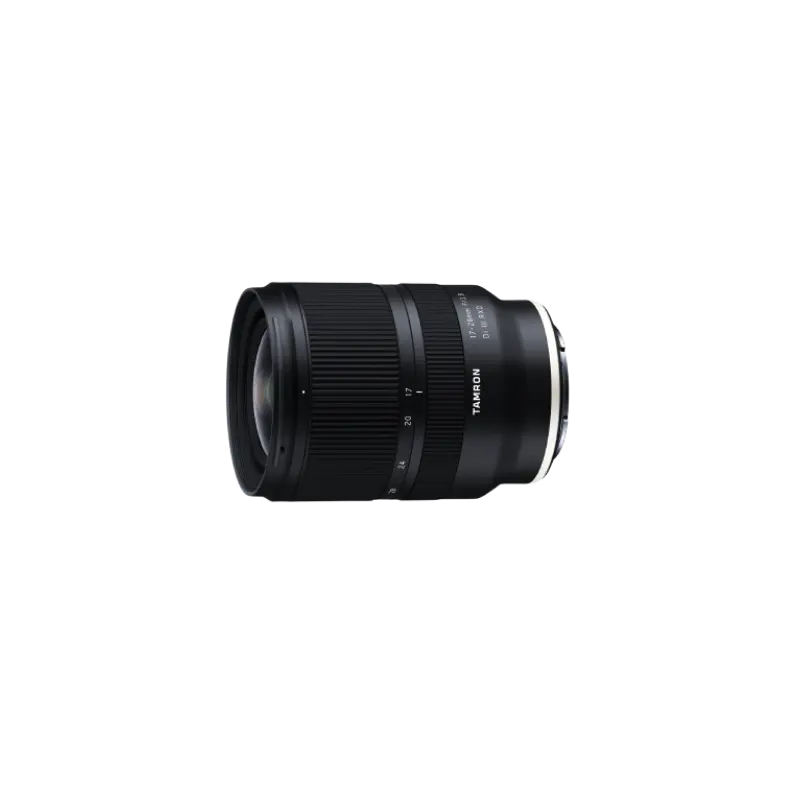
-
17-28mm F/2.8 Di III RXD a046(Model )
The 17-28mm F/2.8 Di III RXD (Model A046) achieves a filter diameter of ø67mm, which is surprising for a large aperture ultra wide-angle zoom lens for full-frame cameras. It’s small and light weight with a good camera balance. It's a dedicated lens for mirrorless interchangeable -lens cameras that can be carried easily and can be used in various situations.
-
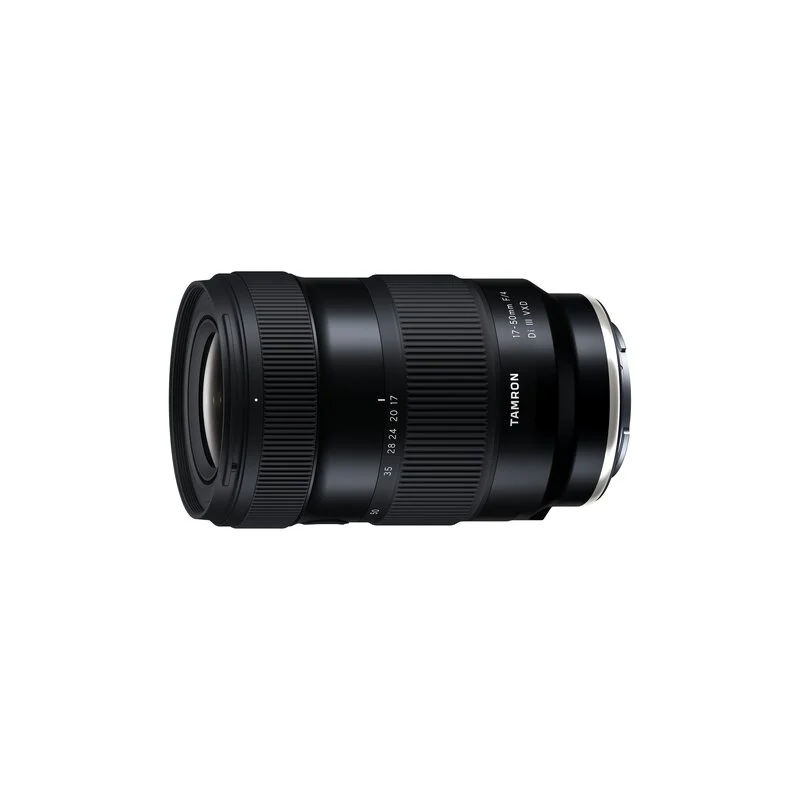
-
17-50mm F/4 Di III VXD a068(Model )
It's the world’s first lens covering from ultra wide-angle 17mm to the standard 50mm focal length. The highly-compact TAMRON 17-50mm F/4 Di III VXD (Model A068) for Sony E-mount full-frame mirrorless cameras offers maximum versatility for still and video creators. From landscapes to living rooms, this lens captures all that you see.
-

-
20-40mm F/2.8 Di III VXD a062(Model )
The 20-40mm F/2.8 Di III VXD (Model A062) is a new large-aperture standard zoom lens that thoroughly pursues portability. While covering the range from the ultra-wide angle of 20mm to the standard range of 40mm, it is the smallest and lightest in its class. It also offers high image quality throughout the entire zoom range, making it useful not only for still image shooting but also for video recording such as vlogging. The VXD, which is quiet and agile, achieves high-speed, high-precision autofocusing. It is a new, unprecedented large-aperture standard zoom lens that allows users to easily enjoy taking out and shooting both still and video.
-

-
28-75mm F/2.8 Di III VXD G2 a063(Model )
Product Page | 28-75mm F/2.8 Di III VXD G2 (Model A063) is the second-generation fast-aperture standard zoom lens for Sony and Nikon full-frame mirrorless cameras, offering significantly improved optical and autofocus performance and new function customization.
-
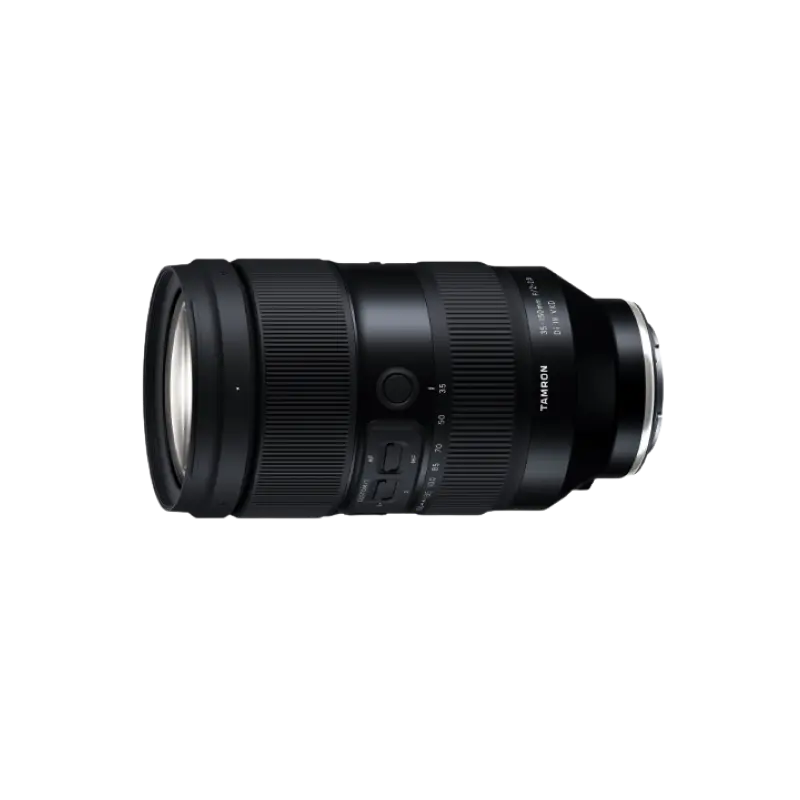
-
35-150mm F/2-2.8 Di III VXD a058(Model )
The 35-150mm F/2-2.8 Di III VXD (Model A058) is a high resolution travel zoom lens that covers everything from the 35mm wide angle to the 150mm telephoto focal length, the first zoom lens achieving an aperture of F2 at the wide angle end. It has a groundbreaking fast-aperture and utilizes the linear motor focus mechanism VXD (Voice-coil eXtreme-torque Drive), thereby achieving high speed, high precision autofocusing. The innovative lens design enabled us to greatly improve the lens's grip and functionality. The software, developed in-house, enables to easily customize functions and to update firmware.

